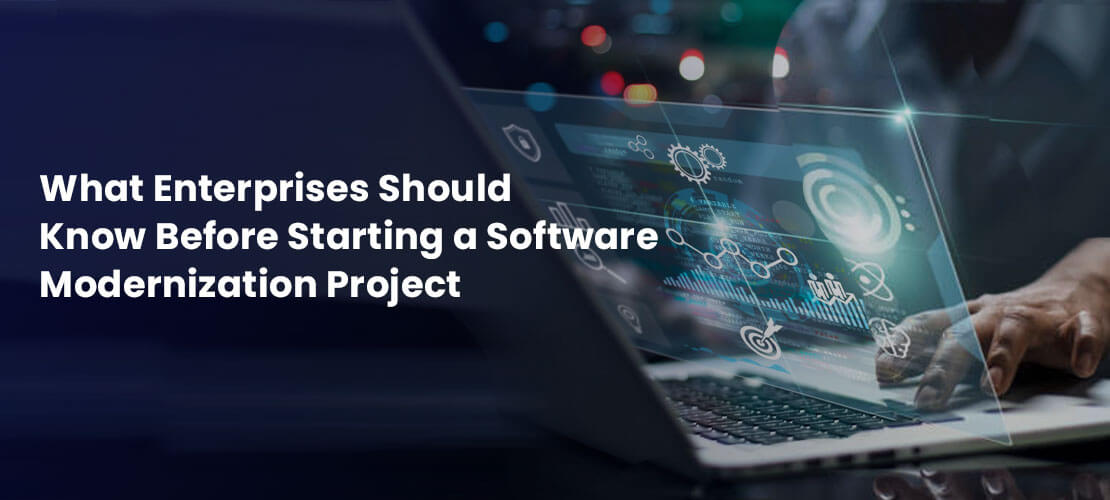What Enterprises Should Know Before Starting a Software Modernization Project
Legacy systems are a major barrier to digital transformation. They’re slow, costly to maintain, hard to integrate, and often a security liability. But software modernization isn’t just a tech refresh—it’s a strategic move with real business implications.
For enterprises, a successful modernization project requires more than picking the right tools. It demands a roadmap grounded in business needs, user expectations, and technical realities. Before jumping into any refactoring or cloud migration, here’s what you need to know.
1. Define Clear Objectives from the Start
Modernization should never begin with just “we need to upgrade.” Start with purpose:
- Are you aiming to reduce maintenance costs?
- Improve system scalability or performance?
- Integrate with new platforms or tools?
- Enhance user experience or comply with new regulations?
These goals influence everything—from the tech stack to architecture decisions.
2. Audit Existing Systems Thoroughly
Understanding what you’re modernizing is step one. This includes:
- Architecture complexity
- External dependencies and integrations
- Code quality and tech debt
- System usage patterns
An architectural review helps identify whether you need a lift-and-shift, refactor, replatform, or rebuild. Not all systems need complete overhauls—some just need better wrappers.
3. Build a Realistic Software Modernization Checklist
Every successful enterprise modernization project starts with a clear plan. Use a checklist to stay focused.
Pre-modernization checklist:
- Catalog all legacy systems and tech stacks
- Define mission-critical modules
- Assess security gaps and compliance needs
- Determine data migration strategies
- Align stakeholders from IT, ops, and business
- Set KPIs for success (cost savings, uptime, TTR, etc.)
- Identify integration needs with other platforms
A checklist isn’t just about ticking boxes—it ensures alignment across departments and prevents missed steps.
4. Choose the Right Modernization Strategy
Depending on your business goals, timelines, and resources, choose one of the following approaches:
- Rehost (Lift-and-shift): Move existing systems to cloud without changing code. Fast but may carry over inefficiencies.
- Replatform: Make small optimizations while migrating—ideal for performance boosts without rewriting code.
- Refactor: Restructure and optimize internal code without changing functionality. Balances speed and long-term value.
- Rebuild: Create a new system from scratch using modern architecture. Resource-heavy but future-ready.
Choose based on where your business is heading—not just where it’s stuck.
5. Involve All Stakeholders Early
Software modernization impacts more than just IT. Involve:
- Compliance and security teams
- Operations and customer support
- Marketing and product managers
- C-suite decision-makers
The earlier stakeholders contribute, the smoother the implementation. It also helps uncover use cases and risks that engineers alone may miss.
6. Develop a Rollout Strategy
Avoid “big bang” deployments. Go for phased rollouts or modular upgrades.
Why this matters:
- Minimizes disruption for users
- Allows time to gather feedback
- Makes rollback easier if issues arise
- Helps teams adjust workflows gradually
Phased rollouts make modernization feel less like a shock—and more like progress.
7. Make UX a Priority
Many enterprises treat backend optimization as the main goal. But the frontend—what users see and interact with—is just as important.
Consider:
- How modernized systems will affect workflows
- Whether the interface needs a redesign
- What devices or platforms users will access it from
- How you’ll onboard users to new systems
Modern systems should be intuitive, accessible, and mobile-ready. Poor UX post-modernization can kill adoption fast.
8. Don’t Underestimate Costs
Software modernization can balloon in cost if not scoped properly. Plan beyond development hours:
- Infrastructure costs (especially if moving to cloud)
- Security upgrades and testing
- Downtime during switchover
- Training and onboarding internal teams
- Ongoing maintenance and support
Build in contingency—about 20 to 30%—for unexpected changes and scope adjustments.
9. Plan for Compliance and Security from Day One
Legacy systems often lack the modern security and compliance frameworks required today. Make security part of the modernization process, not an afterthought.
Ensure:
- Updated encryption protocols
- Secure access controls
- GDPR, HIPAA, or industry-specific compliance baked in
- Regular vulnerability testing and code reviews
Use this opportunity to close security gaps and adopt a proactive, automated approach to compliance.
10. Monitor, Measure, and Improve Post-Launch
Modernization is not a “launch and forget” initiative. You’ll need ongoing performance monitoring and optimization.
Track:
- System uptime
- User engagement and retention
- Bug or issue frequency
- Response times
- Cost per deployment or update
Use these metrics to inform continuous improvements and ensure long-term ROI.
Final Thoughts: Modernization Is a Business Strategy, Not Just an IT Task
Enterprises that treat modernization like a one-time tech upgrade often end up with cost overruns and poor user adoption. The real winners are those who view it as an ongoing, cross-functional initiative.
At Clavax, we help businesses turn aging systems into modern digital ecosystems—built for agility, growth, and user-centricity. From system audits to full-scale rearchitectures, we tailor every project to your long-term success.
Let’s modernize with purpose. Let’s build what’s next.
